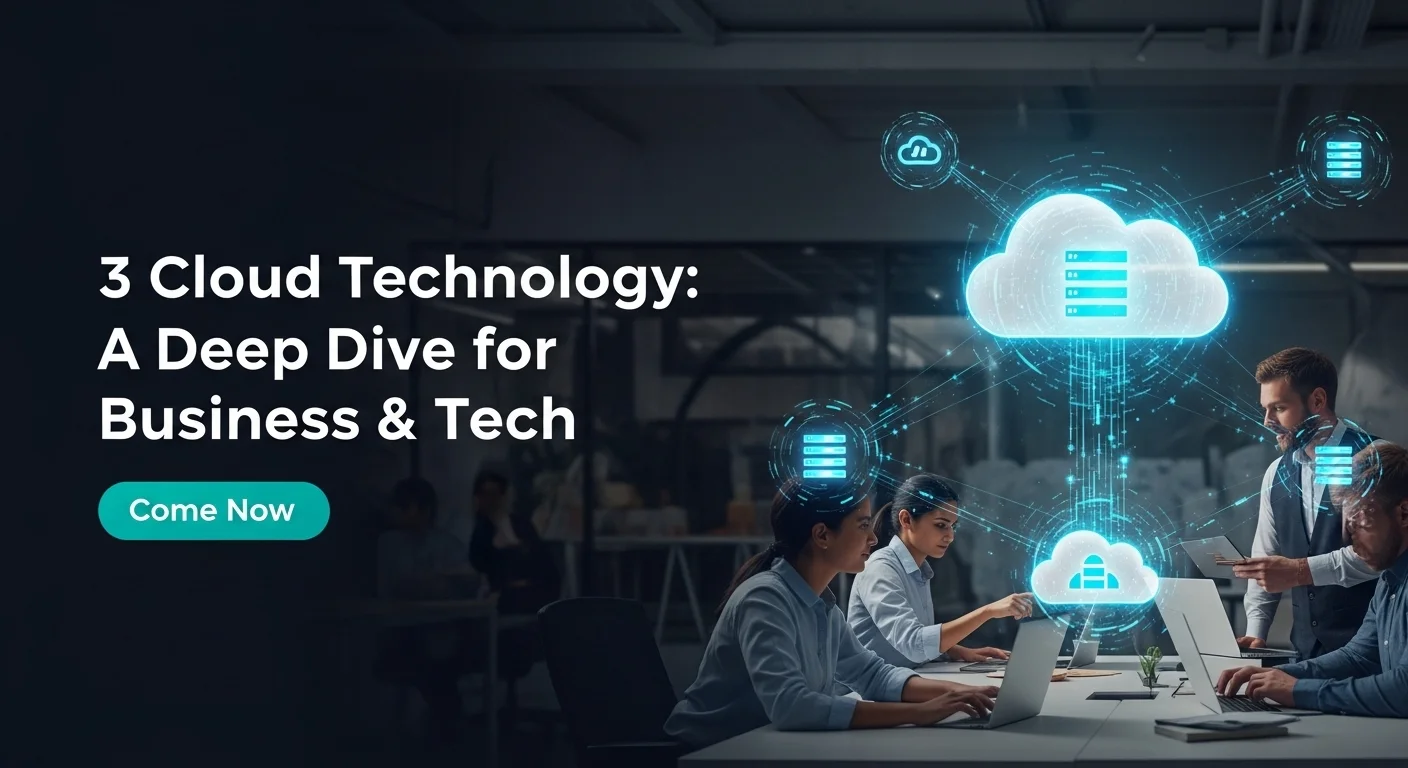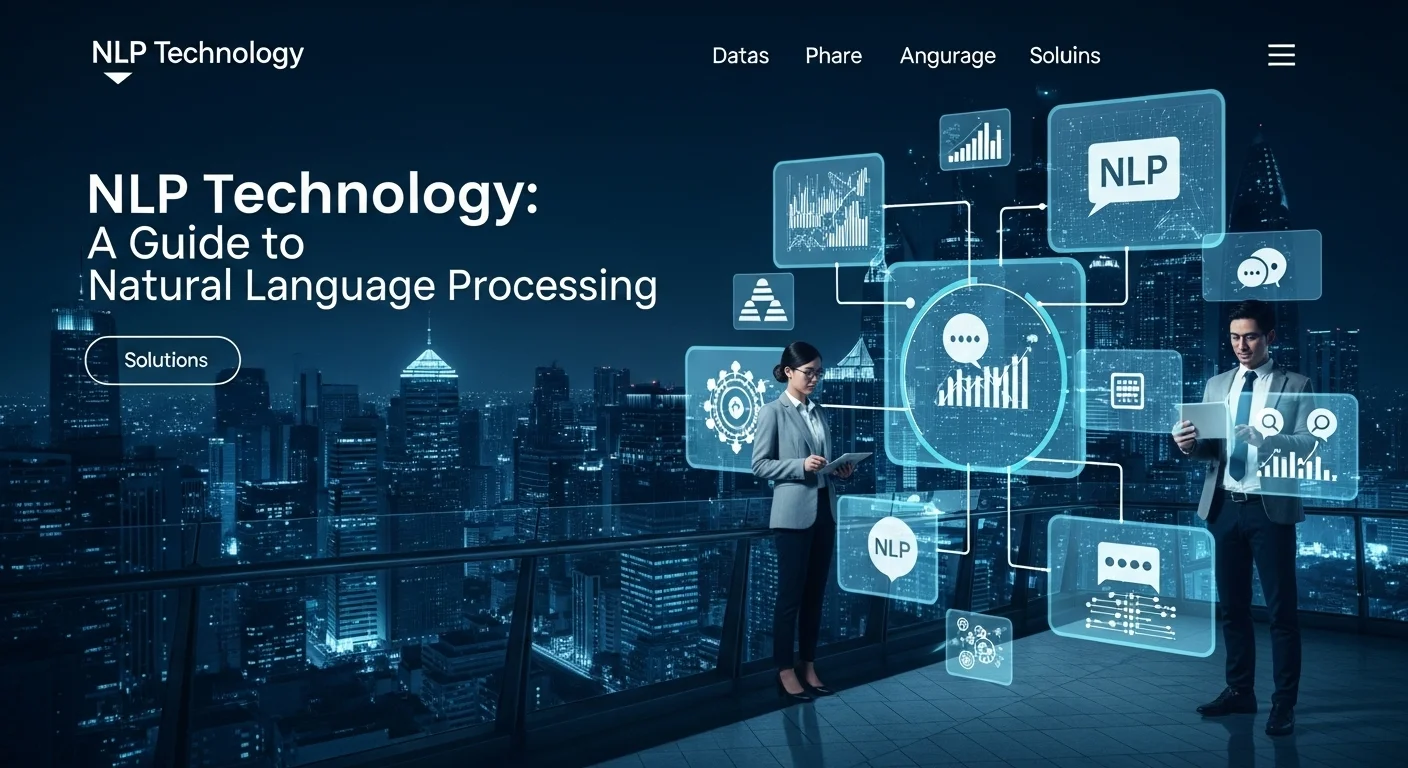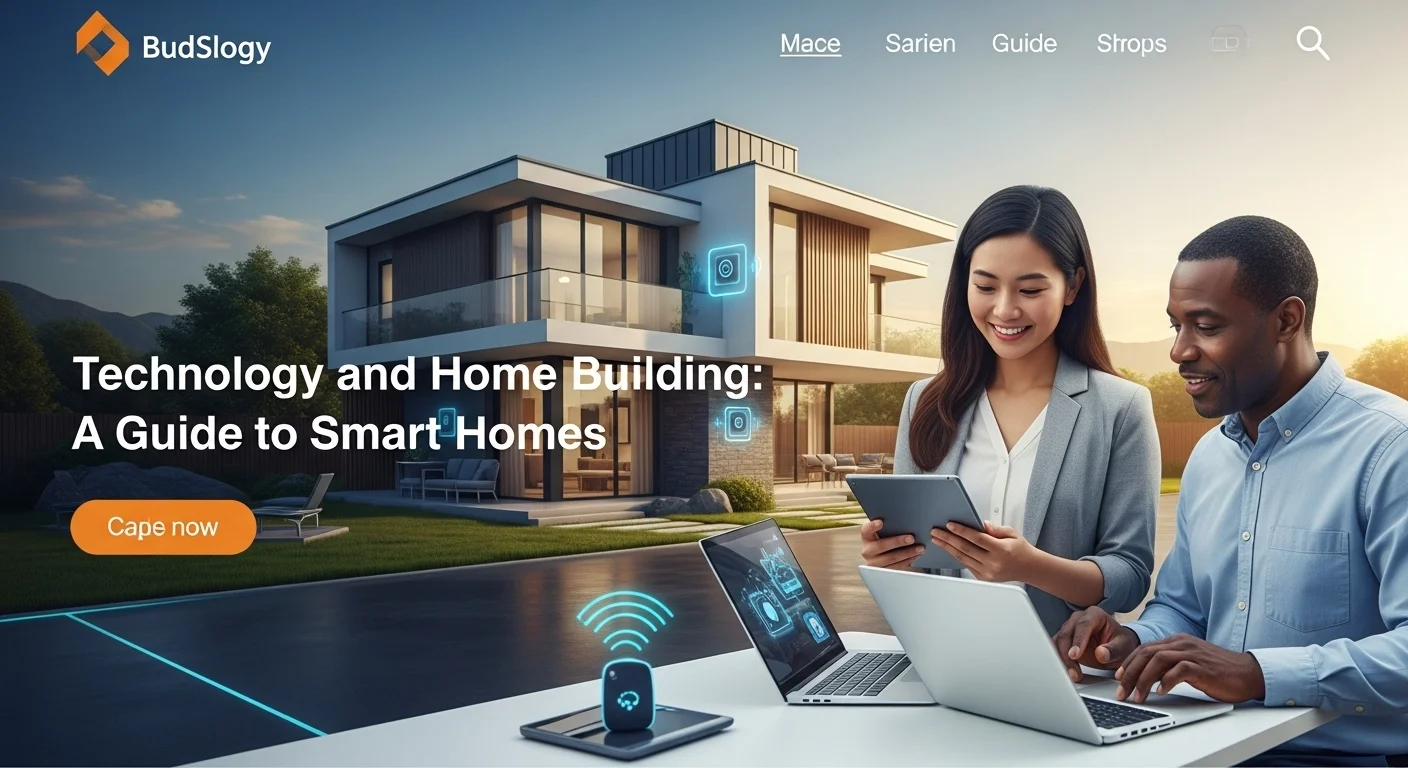The Big 3 in Cloud: A Practical Guide to AWS, Azure, and GCP for Your Business

Executive Summary
Over my years as a cloud strategist, I've seen countless businesses grapple with one huge question: which cloud is right for us? The conversation almost always centers on the 'Big 3': Amazon Web Services (AWS), Microsoft Azure, and Google Cloud Platform (GCP). These aren't just options; they are the market. This guide is my attempt to demystify this world for you. We'll start with the basics, breaking down the core cloud service models—Infrastructure (IaaS), Platform (PaaS), and Software (SaaS)—in simple terms. Then, we'll take a close look at each of the three giants, comparing their real-world strengths and weaknesses to help you see where they fit. For leaders and tech professionals alike, think of this as your map for navigating the cloud landscape, filled with insights on smart strategies, cost control, and security. My goal is to give you the knowledge to turn your tech infrastructure from a cost center into a powerful engine for growth.
Table of Contents
Table of Contents
- What are the 'Big 3' in Cloud Technology?
- The 3 Foundational Cloud Service Models
- Why Their Dominance Matters for Your Business
What are the 'Big 3' in Cloud Technology and Why Do They Matter?
In all my talks with businesses, from startups to global enterprises, the term 'cloud' eventually comes up. But more often than not, what they're really talking about is the ecosystem created by the three dominant players in the industry: Amazon Web Services (AWS), Microsoft Azure, and Google Cloud Platform (GCP). This trio forms what many of us in the field call the 'Big 3'. They don't just participate in the cloud market; they essentially *are* the market, holding the vast majority of global cloud infrastructure. Understanding this landscape isn't just a task for your IT department; it's a critical piece of business strategy for any leader aiming for growth, efficiency, and innovation.
The importance of this trio comes down to scale and accessibility. They've poured billions into building a global network of data centers, which means businesses like yours can tap into immense computing power, storage, and sophisticated tools without the crippling upfront cost of buying and managing physical hardware. I've seen this firsthand—it has completely leveled the playing field, allowing small, nimble companies to access the same tech firepower as established corporations. The intense competition among them is also a huge win for you, the customer. It fuels constant innovation, from AI and machine learning to IoT, all while driving prices down. These services are typically offered on a pay-as-you-go basis, making them incredibly flexible.
The Foundational Pillars: The 3 Types of Cloud Services
To really harness the power of the cloud, you first need to understand its basic building blocks. Everything is built on three fundamental service models, each offering a different level of control and management. The right choice for your business depends entirely on your specific needs, your team's technical skills, and how much control you want to have.
1. Infrastructure as a Service (IaaS)
IaaS is the most fundamental service model. I like to explain it as leasing the raw materials of a data center. A provider like AWS, Azure, or GCP gives you access to virtualized computing resources—virtual servers, storage, and networking—over the internet. Think of it like leasing a plot of land with utility hookups. You get the foundational space and infrastructure, but you are responsible for building the house on top of it: installing the operating system, managing security patches, and running your applications. This model offers the ultimate flexibility and control, which is perfect for companies with very specific IT needs or those migrating existing applications without rebuilding them. For example, you might use an AWS EC2 instance (IaaS) to host a custom application, giving you total control over the server environment. The huge win here is avoiding the massive capital expense of buying physical servers.
2. Platform as a Service (PaaS)
One step up from IaaS is PaaS. Here, the provider offers not just the infrastructure but also the platform on which developers can build, deploy, and manage applications. This includes the operating system, development tools, and database management systems. This is like renting a fully equipped workshop. The heavy machinery, workbenches, and power tools are all provided and maintained for you. You just bring your creative project and get to work building. PaaS frees your development team from worrying about the underlying infrastructure, allowing them to focus purely on writing code and innovating. Services like Google App Engine or Azure App Service are prime examples. A developer can just upload their code, and the platform handles the rest—deployment, scaling, and balancing traffic. I've seen PaaS dramatically speed up development cycles, making it a favorite for agile teams.
3. Software as a Service (SaaS)
SaaS is the model most people are familiar with, even if they don't know the term. It's software delivered over the internet, usually on a subscription basis. The provider manages everything from top to bottom: the application itself, the data, the servers, and all the infrastructure. You, the user, just access it through your web browser. Think of it as moving into a fully furnished apartment. You just show up with your suitcase and start living. The furniture, electricity, and maintenance are all handled for you. Everyday examples include Google Workspace, Microsoft 365, and Salesforce. There's nothing to install on your computer, and you never have to worry about updates. For many businesses, the journey into the cloud starts with a SaaS application, as it offers immediate value with zero IT overhead.
Why Their Dominance Matters for Your Business
The fact that the market is concentrated around these three giants has huge implications. It creates a 'gravity' effect. As more companies build on AWS, Azure, or GCP, a rich ecosystem of tools, certified professionals, and community support grows around them. Frankly, it's just easier to find a developer with AWS skills than one for a smaller provider.
Moreover, their rivalry benefits you directly. It pushes them to constantly improve and innovate. Each has its own personality and strengths. Google Cloud is often praised for its prowess in data, AI, and Kubernetes. Microsoft Azure shines with its hybrid cloud solutions and deep integration with the enterprise software many large companies already use. And AWS, the pioneer, has the most mature and comprehensive suite of services available. This means you can choose a provider—or a combination of them—that perfectly aligns with your goals. The question is no longer *if* you should use the cloud, but *how* you can strategically use the unique strengths of the Big 3 to build a powerful and resilient future for your business.

Table of Contents
- A Practical Guide to Choosing Your Cloud Partner
- 1. Amazon Web Services (AWS): The Veteran and Market Leader
- 2. Microsoft Azure: The Enterprise and Hybrid Champion
- 3. Google Cloud Platform (GCP): The Data and AI Innovator
- Putting It All Together: Building Real-World Solutions
A Complete Guide to the Big 3 in Technology and Business Solutions
Making sense of the cloud world requires more than just knowing the names. To make a smart decision for your business, you need a solid, comparative look at the main players: AWS, Microsoft Azure, and Google Cloud. I've worked with all three extensively, and I can tell you that while they offer similar core services, their unique strengths and strategic focus can make one a much better fit for you than the others. Think of choosing a provider like choosing a long-term business partner—it will shape your technology, your team's workflow, and your budget for years to come.
A Deep Dive into the Titans: AWS vs. Azure vs. GCP
Let's break down what makes each of these providers tick, based on my experience helping businesses choose the right path.
1. Amazon Web Services (AWS): The Market Leader and Pioneer
AWS is the veteran in the room. They launched back in 2006, giving them a massive head start, and it truly shows. They still lead the market in share and offer the most extensive and mature catalog of services I've ever seen. Their global footprint is second to none, which is a huge deal if you need to serve customers around the world with minimal delay.
- Core Strengths: Reliability, scalability, and the sheer number of options are AWS's calling cards. They have over 200 services, covering everything from basic virtual servers (EC2) and storage (S3) to advanced serverless computing (Lambda) and AI platforms (SageMaker). Their ecosystem is also a massive advantage; the AWS Marketplace has a tool for just about anything, and the community of AWS-certified professionals is enormous.
- My Experience: I've seen startups go from a garage idea to a global enterprise on AWS. It's a versatile, all-purpose platform that can handle almost any workload you throw at it. Its free tier is also incredibly generous, making it a great place for new businesses to start experimenting without a big investment.
2. Microsoft Azure: The Enterprise and Hybrid Cloud Champion
Microsoft Azure came later to the party but has quickly become a powerhouse by playing to its strengths: its deep roots in the enterprise world. As the solid number two, Azure's key advantage is how beautifully it integrates with the Microsoft products so many companies already rely on, like Windows Server, Office 365, and Dynamics 365.
- Core Strengths: Azure's superpower is the hybrid cloud. For large companies with their own data centers, tools like Azure Arc are a game-changer, allowing them to manage both their on-premise and cloud resources from one place. This is a huge draw for businesses that aren't ready to go 'all-in' on the public cloud. From my perspective, its PaaS offerings are also top-notch, especially for developers working in the .NET ecosystem.
- My Experience: For my clients already heavily invested in the Microsoft universe, choosing Azure is often a no-brainer. It feels like a natural extension of their existing environment. It's also a favorite for government agencies and other regulated industries due to its strong focus on security and compliance.
3. Google Cloud Platform (GCP): The Data, AI, and Open Source Powerhouse
While third in market share, don't underestimate Google Cloud. It's a formidable competitor that has built its reputation on being the best in highly specialized, cutting-edge areas. By leveraging the same internal technology that powers Google Search and YouTube, GCP has become a leader in data analytics, machine learning (AI/ML), and modern application development with containers.
- Core Strengths: If your business is built on data, GCP should be at the top of your list. Services like BigQuery, its serverless data warehouse, are simply phenomenal. GCP is also a huge proponent of open-source technology. It created Kubernetes, the industry standard for managing containerized applications, and its Google Kubernetes Engine (GKE) is widely considered the best managed Kubernetes service out there. Its lightning-fast global network is another major plus.
- My Experience: I always recommend GCP to cloud-native businesses and teams that live and breathe data. If you want to leverage the most advanced AI/ML tools or have a strong DevOps culture centered on containers, GCP provides a truly powerful and developer-friendly platform.
Building Business Solutions with the 3 Types of Cloud Services
Knowing the providers is just one piece of the puzzle. The real magic happens when you strategically mix and match the service models (IaaS, PaaS, SaaS) to solve business problems. A smart company rarely uses just one.
- For an E-commerce Site: I've helped build e-commerce platforms that use IaaS (like AWS EC2) for their main website to get maximum control over performance. Then, they use a PaaS solution (like Heroku or Azure App Service) to quickly build and deploy internal tools for managing inventory. And on top of it all, they use SaaS products like Google Analytics and a customer support platform to handle key business functions.
- For a Data Analytics Project: Imagine a finance company building a fraud detection system. They might use GCP's BigQuery (a hybrid PaaS/SaaS) to analyze massive datasets in seconds. The AI models could be built using Amazon SageMaker or Azure Machine Learning (PaaS). And the final dashboards for their analysts would be delivered through a SaaS tool like Power BI or Tableau.
This layered approach allows you to use the best tool for the job. The key is to see the cloud not just as a remote hard drive, but as a dynamic platform for innovation where the unique strengths of the Big 3 can be combined to give you a real competitive edge.

Table of Contents
- Advanced Strategies: Thinking Beyond a Single Cloud
- Essential Best Practices for Cloud Management
- The Future is Now: AI, Serverless, and Edge Computing
Tips and Strategies to Master the Cloud Experience
Getting the most out of the cloud is about more than just picking a provider. To really turn your cloud investment into a powerful advantage, you need to think strategically. This means looking at advanced setups like multi-cloud, getting serious about security and cost management, and keeping an eye on the future. From my experience, a proactive approach is what separates the companies that just *use* the cloud from those that *thrive* on it.
Advanced Strategies: Multi-Cloud and Hybrid Cloud
In the past, most companies would just pick one provider and stick with them. Today, the smartest strategies often involve using multiple environments to get the best results.
1. The Multi-Cloud Strategy
A multi-cloud strategy simply means using services from more than one public cloud provider, like using AWS for some things and Azure for others. I'm a big fan of this approach for a few key reasons:
- Avoiding Vendor Lock-In: Putting all your eggs in one basket can be risky. A multi-cloud approach keeps you flexible and gives you more leverage when negotiating contracts.
- Using the Best Tool for the Job: This is the biggest benefit in my book. It lets you cherry-pick the absolute best service for any given task. For instance, I've designed systems that use Google Cloud's BigQuery for its amazing data analytics while running the main applications on AWS because of its mature and robust ecosystem.
- Better Resilience: By spreading your applications across different providers, you protect yourself from a massive, provider-wide outage. If one cloud has a bad day, you can fail over critical services to another.
The trade-off is complexity. Managing multiple clouds requires a skilled team and tools like Terraform or Kubernetes to keep everything consistent and under control.
2. The Hybrid Cloud Strategy
A hybrid cloud strategy is a mix of your own private, on-premises data center and one or more public clouds. For many established companies, this is the most practical path forward. Here’s why:
- Compliance and Data Control: You can keep your most sensitive data securely on-premises to meet strict regulations, while using the public cloud for everything else.
- Flexibility to Scale: You can run your everyday operations in your private cloud and then 'burst' into the public cloud to handle unexpected traffic spikes, like during a big sale. You only pay for that extra power when you need it.
- Low Latency for Critical Apps: For things like manufacturing systems that need split-second response times, keeping the application close to the hardware on-premises is key. The cloud can then be used for analyzing the data it generates.
Providers like Microsoft, with Azure Arc, and AWS, with Outposts, have developed great tools that make these hybrid setups much easier to manage.
Essential Best Practices for Cloud Management
No matter what strategy you choose, some best practices are universal. These are the things I tell every client to focus on to ensure their cloud environment is secure, affordable, and efficient.
1. Security: The Shared Responsibility Model
Here's the most critical concept to get right: cloud security is a partnership. The provider (AWS, Azure, GCP) is responsible for the security of the cloud—the physical data centers, the network, the core hardware. You are responsible for security *in* the cloud—managing who has access, encrypting your data, and securing your applications. Think of it this way: the provider builds a secure apartment building, but you are still responsible for locking your own front door.
- Identity and Access Management (IAM): Always follow the 'principle of least privilege.' Only give users and applications the absolute minimum permissions they need. And please, use multi-factor authentication (MFA) everywhere.
- Data Encryption: Encrypt your data both when it's sitting on a disk (at rest) and when it's moving across the network (in transit). All the major providers make this easy to do.
- Network Security: Use tools like virtual private clouds (VPCs) and security groups to create secure, isolated zones for your resources and control who or what can talk to them.
2. Cost Management and FinOps
The cloud's pay-as-you-go model is amazing, but I've seen it become a silent budget killer if not watched closely. The practice of FinOps is all about bringing financial discipline to this new way of spending.
- Tag Everything: Use your provider's cost management tools to see where your money is going. Tag every resource (server, database, etc.) with its project, team, or department so you can accurately track costs.
- Use the Right Pricing: For predictable workloads that run 24/7, don't pay the on-demand price. Use reserved instances or savings plans to get massive discounts in exchange for a 1- or 3-year commitment.
- Automate Shutdowns: This is an easy win. I've seen companies waste thousands on development servers left running over the weekend. Use simple scripts to automatically turn off non-production resources outside of work hours.
The Future is Now: AI, Serverless, and Edge Computing
The cloud is always moving forward. To stay ahead, you need to be looking at the next wave of innovation being pushed by the Big 3.
- Artificial Intelligence (AI) and Machine Learning (ML): The cloud has made AI accessible to everyone. You can use pre-trained models for vision or speech recognition or build your own custom AI with powerful platforms like SageMaker and Azure ML.
- Serverless Computing: With services like AWS Lambda or Google Cloud Functions, you can run code without thinking about servers at all. The platform handles all the scaling automatically. It's incredibly cost-effective for certain types of applications and can simplify development.
- Edge Computing: This is about processing data closer to where it's created, at the 'edge' of the network, instead of sending it all to a central cloud. It's essential for IoT devices and other real-time applications where latency is a killer.
By embracing these strategies and best practices, you can move beyond just using the cloud as a remote data center and turn it into a true engine for innovation and growth. For deeper dives, I often point my clients to expert analysis from firms like Gartner, which provides excellent market comparisons and research on cloud services. The journey is ongoing, and the key to success is to never stop learning and adapting.
Expert Reviews & Testimonials
Sarah Johnson, Business Owner ⭐⭐⭐
Good information on the Big 3 clouds, but as a business owner, I would have loved to see more practical, real-world examples I could apply directly.
Mike Chen, IT Consultant ⭐⭐⭐⭐
A helpful article on cloud providers. It clarified a lot for me, though some of the technical concepts could have been broken down even more simply.
Emma Davis, Tech Expert ⭐⭐⭐⭐⭐
Fantastic article! It was incredibly comprehensive and a huge help for my specialization. Everything was explained perfectly.



